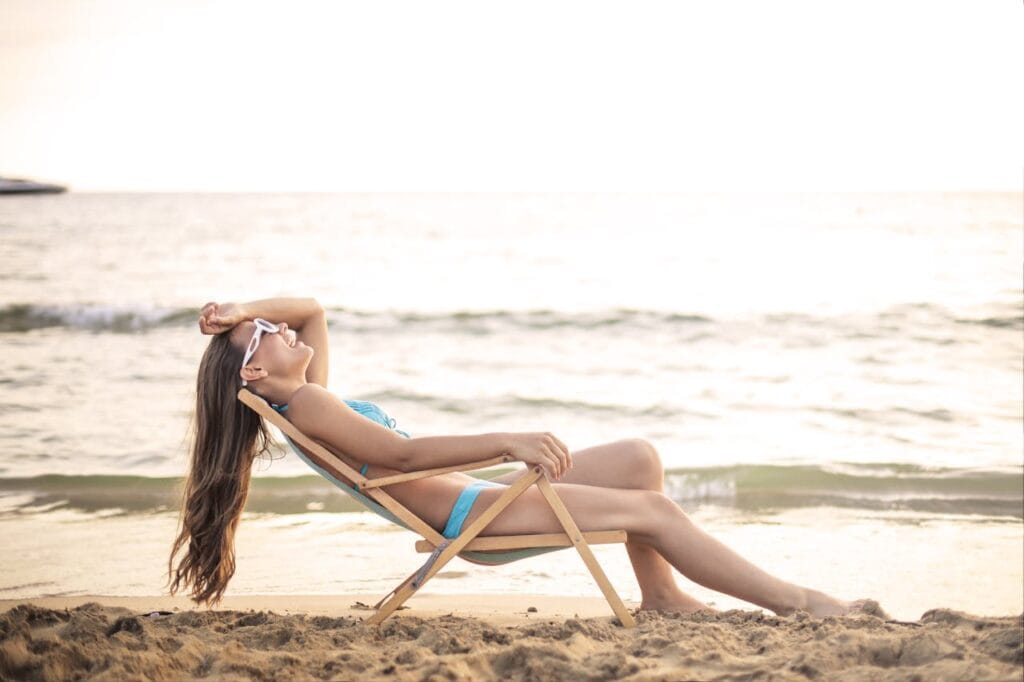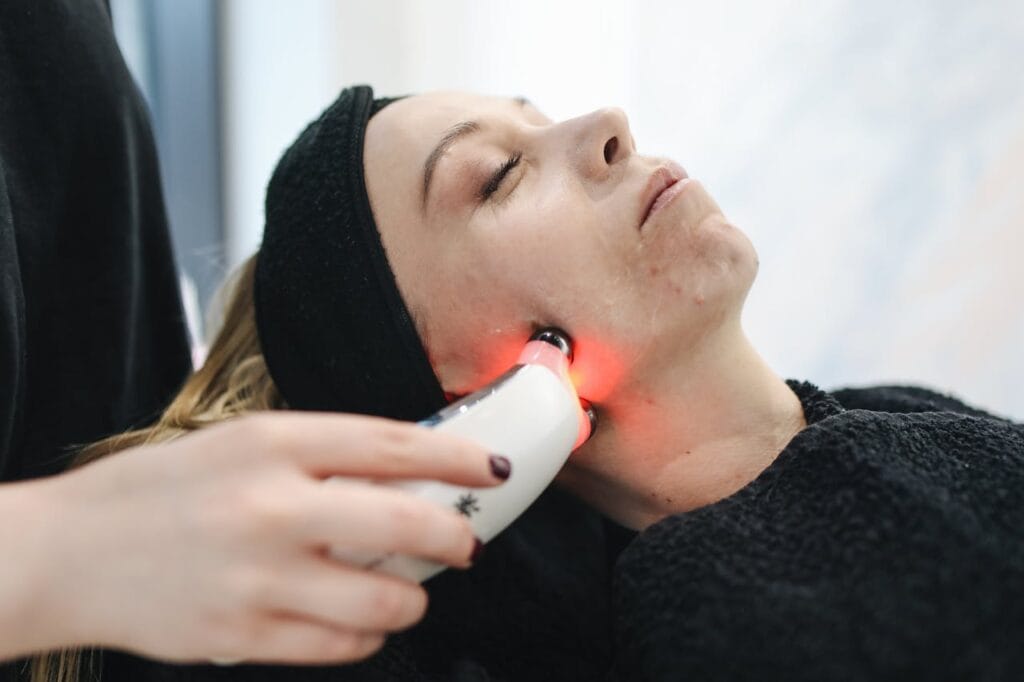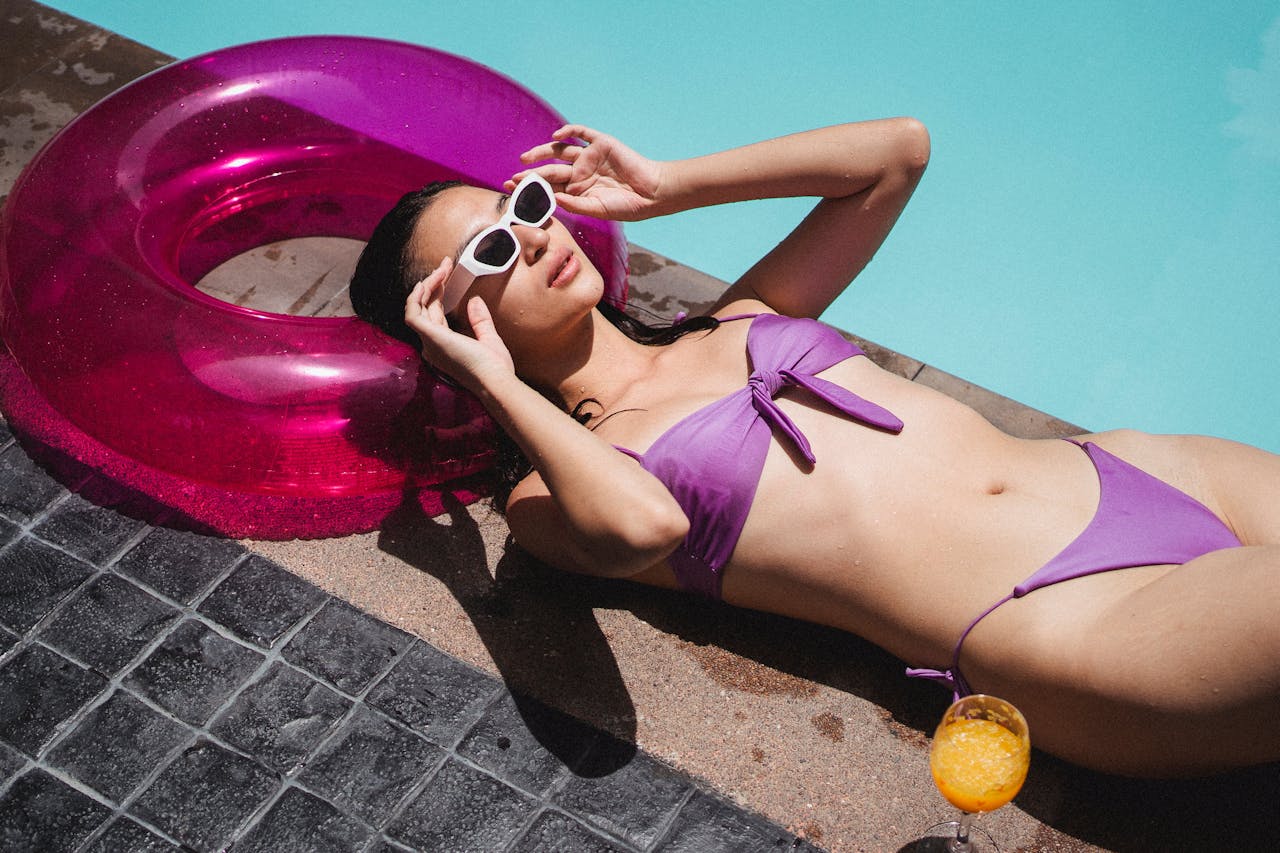There is information on the Internet that sunbathing helps get rid of acne on the face and body. We checked how substantiated this statement is from a scientific point of view.
It has been reported that exposure to sunlight can clear up acne on the skin. tanning studios And manufacturers solariums, and social network users share positive experience such therapy. Service visitors questions And answers wondering whether sunbathing really helps treat acne.
Pimples, or acne, is a skin condition in which spots form on the surface of the skin (usually the face, back, and chest). different imperfections, from blackheads to cysts. They arise in several ways at once reasons: Follicular keratinocytes (skin cells lining the hair follicle) divide too quickly, the sebaceous glands increase in size and produce excess sebum, and Propionibacterium acnes bacteria living on the skin begin to multiply actively. Together, these factors lead to the accumulation of excess keratinocytes, sebum and microbes in the sebaceous glands.
The claim that the sun dries out pimples is not unfounded. During sunbathing, the skin is exposed to ultraviolet radiation, and tanning is, in fact, its protective function. reaction. The body, trying to protect the skin from damage, begins to actively produce melanin - a substance responsible for pigmentation and capable of absorbing UV radiation. Ultraviolet light not only changes skin tone, but also dries her. At the same time, the body does not produce sebum in order to provoke acne and make people suffer, one of its key functions — moisturizing the skin and protecting it. If the sun causes dehydration, the pimples may indeed dry out (like the rest of the skin), but the sebaceous glands will begin to work more actively to repair the damage caused by the sun's rays. Therefore, soon overdried skin will become even more oily than before tanning, and this, in turn, can provoke an exacerbation of acne. For the same reason, dermatologists recommend When caring for oily skin, do not overdo it with aggressive exfoliating products and do not neglect moisturizer. In addition, if there are already marks on the skin post-acne, essentially caused by hyperpigmentation, the sun can aggravate the situation and the spots will become even more pronounced.

As mentioned above, one of the causes of skin inflammation is microbes, and many articles about how sunbathing supposedly helps fight acne mention the antibacterial effect of ultraviolet light. Indeed, special bactericidal UV lamps are often used for disinfection in medical offices. But the question arises: if the sun is so effective at destroying bacteria, why haven’t the world’s microbes completely died out yet?
In fact, the effect of special lamps is different from ordinary sunlight. The ultraviolet region of the spectrum of electromagnetic radiation from the Sun is conventionally divided into three range depending on the wavelength: UVA (320–400 nm), UVB (280–320 nm) and UVC (100–280 nm). The longer the wave, the greater the penetrating properties of the sun's rays. Long-wave rays of type A and some rays of type B reach the Earth's surface - this is why experts recommend using SPF products that protect against UVA and UVB radiation, but do not mention type C, because short-wave UVC radiation is completely absorbed by the atmosphere. But in bactericidal lamps just used that's it. It is dangerous to be in rooms where such lamps are turned on: they can cause burns, and if looked directly at, eye injuries (albeit reversible, without long-term consequences). Therefore, it is simply incorrect to compare the effect of bactericidal lamps and sunbathing on the beach, because different types of radiation have different effects.
However, ordinary sunlight can also have some bactericidal effect. In some remote, low-income villages, such as India and some African countries, drinking water is contaminated are recruiting into transparent containers and exposed to the sun for at least six to eight hours, after which the water becomes safer. However, this occurs due to the destruction of the DNA of cells - both microbes and people. "Verified" already wrotethat the proven harm from long-term (more than 15 minutes) sunbathing outweighs the expected benefits. Therefore, the damage sustained by the skin over six to eight hours under the scorching sun is hardly worth the expected short-term cosmetic effect. Pimples from acne can give way to blisters from burns, not to mention the likely long-term (and more dangerous) consequences like skin cancer.

There is evidence that patients with acne are significantly more likely to have vitamin D deficiency than those who do not have such skin problems. Moreover, according to meta-analysis case studies conducted by Thai scientists, the lower the level of this vitamin, the more severe the acne. The production of vitamin D in the body is promoted by ultraviolet light, which is usually associated with the supposed benefits of tanning for overall health. However, experts notethat the deficiency of this substance can be replenished in a less risky way - from food and/or nutritional supplements. In addition, WHO adheres to opinionsthat to get enough vitamin D you don’t need to lie on the beach for hours; walking for 5–15 minutes is enough. several times a week.
At the same time, the spectrum of electromagnetic radiation from the Sun includes not only ultraviolet, but also the so-called visible light - rays that the human eye can discern (the wavelength of this range is from 380 to 700 nm). Depending on the wavelength, light has different colors - from red to violet. This can be seen with your own eyes when the sun is refracted in falling raindrops and its light is “decomposed” into a spectrum - it appears in the sky rainbow. It is based on visible light LED therapy, which is now actively used in cosmetology and dermatology to treat skin diseases, including acne, as well as to stimulate collagen production. Blue and red light are most often used in cosmetology. In general, the skin is exposed to them during sunbathing, so in a certain sense, tanning, like LED therapy at a dermatologist, has some positive effect. However, during the procedure with a doctor, you can minimize the harmful effects of ultraviolet radiation, which is dangerous to health. Of course, if you tan with a high UVA and UVB SPF and reapply it every two hours, you can protect yourself from UV rays on the beach, but your skin will still be exposed to some red and blue light. But in medical institutions this can be achieved faster and safer. In addition, the specialist will select the type of light and exposure time required in a particular case. However, experts note: despite the fact that LED therapy is currently considered safe, it is a relatively new procedure, so there is still very little data on its effect on skin condition and health in general in the long term.

Sometimes sunbathing itself can provoke skin rashes that are not associated with acne. Allergic A reaction to sun rays can occur in any person at any age; the specific reasons for its occurrence are still unclear (we only know that taking antibiotics, hormonal drugs, retinoids and some other medications increases the risk of its occurrence). With such an allergy, blistering rashes, hives, red spots may appear on the skin, and the affected area may swell, itch, and itch. Although this allergy has no connection with acne, it is one example of how trying to treat acne with tanning can lead to a deterioration in the condition and appearance of the skin.
Thus, tanning is not the best treatment for acne. Firstly, if you don’t use SPF (or do it incorrectly), you can get burns that can lead to cancer. Secondly, prolonged sunbathing has only a temporary visual effect, but in fact can only worsen both rashes and the condition of the skin in general. Vitamin D has a beneficial effect on acne-prone skin, but can be supplemented in other ways with fewer health risks. The same applies to the effect of visible light on the skin - in this sense, LED therapy under the supervision of a cosmetologist is probably preferable to sunbathing.
Cover photo: Armin Rimoldi
- Vox. Ultraviolet light can kill almost all the viruses in a room. Why isn’t it everywhere?
- Is it true that exposure to sunlight is good for your health?
- Is it true that ultraviolet manicure lamps increase the risk of skin cancer?
- Myths and misconceptions about sunscreens
If you find a spelling or grammatical error, please let us know by highlighting the error text and clicking Ctrl+Enter.






